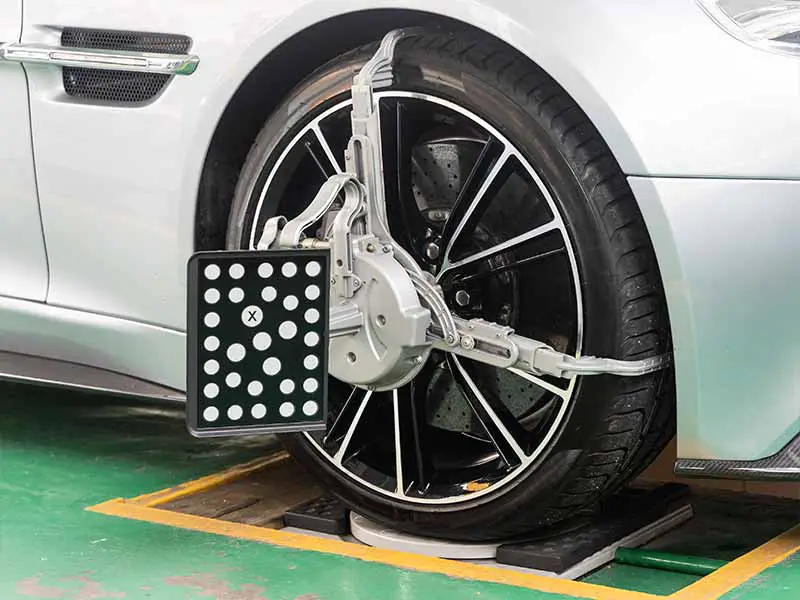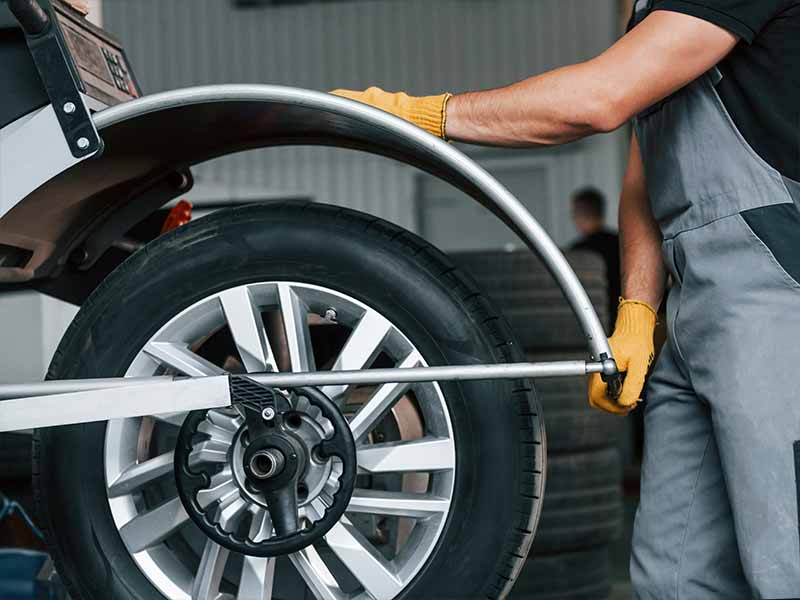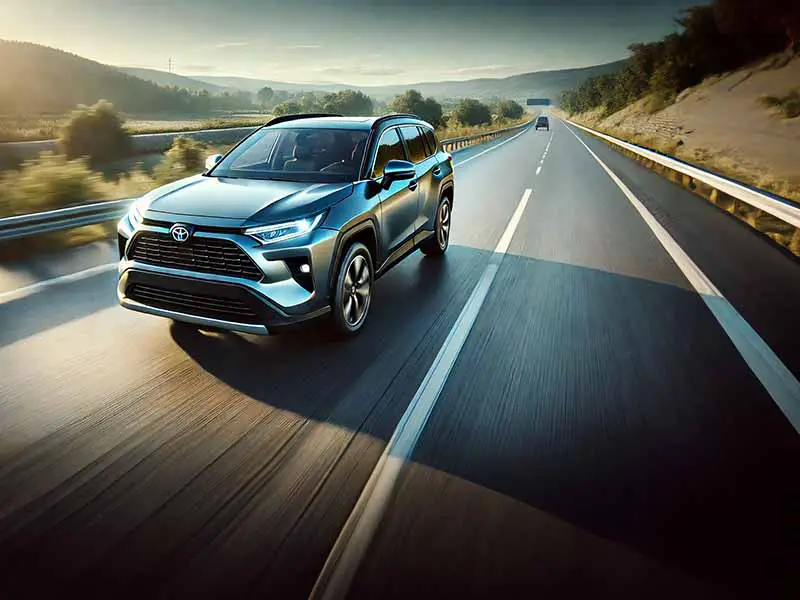Ever had that moment when you’re cruising along the highway, and suddenly your car starts shaking like it’s caught a chill, or it’s pulling to one side like it has a mind of its own? Well, chances are it might just need a little TLC in the form of wheel alignment or balancing.
Wheel Alignment Vs Balancing
Wheel alignment involves adjusting the angles of the wheels so they are perpendicular to the ground and parallel to each other, improving vehicle handling and tire wear.
Wheel balancing equalizes the weight of the combined tire and wheel assembly, ensuring it spins smoothly at high speeds, enhancing the comfort of the ride and the longevity of the tires.
In this article, we’ll delve into the differences between wheel alignment and wheel balancing, explore their importance, and answer some commonly asked questions. We’ll also equip you with the knowledge to identify symptoms of improper alignment or unbalanced wheels, and why correcting these is crucial for your vehicle’s performance and your safety on the road.
Let’s take a closer look.

Understanding Wheel Alignment
Wheel alignment, also known as tire alignment, might sound complex but it’s really about ensuring your vehicle drives straight and smooth. When we talk about wheel alignment, we’re really talking about your car’s suspension system, not the tires and wheels themselves. So, let’s break this down into simple, easy-to-understand terms.
What is Wheel Alignment?
Wheel alignment refers to the adjustment of a vehicle’s suspension system – the framework that connects your vehicle to its wheels. In simple terms, while we call it “wheel alignment,” we’re actually adjusting the angles of your vehicle’s wheels to ensure they’re set to the car manufacturer’s exact specifications.
The main goal here is to have all the tires moving in the same direction and to have the steering wheel centered. There are three main alignment angles that we care about, and they are:
- Camber: This is the inward or outward angle of the tire when viewed from the front of the vehicle. Too much inward or outward tilt, known as negative and positive camber, respectively, can cause tire wear on one edge.
- Toe: This refers to the extent to which your tires turn inward or outward when viewed from above. Imagine looking down at your feet and pointing your toes inward towards each other, or outward away from each other, this is similar to your tires “toeing in” or “toeing out”.
- Caster: This is the angle of your steering axis when viewed from the side of your vehicle. Think of it as the angle of the steering pivot, which helps with balance, stability, and steering.
Why is Proper Alignment Important?
Proper wheel alignment is crucial for a variety of reasons. Let’s go through some key points:
- Even Tire Wear: Proper alignment ensures even tire wear, extending the life of your tires. When your tires wear evenly, you won’t have to replace them as frequently, saving you money in the long run.
- Smooth Ride: When your tires are aligned correctly, you’ll get a smoother ride. Misaligned tires can make your vehicle pull to one side or the other and your ride could feel rough or jittery.
- Improved Fuel Economy: Believe it or not, proper wheel alignment can also help improve your fuel economy. How so? Misaligned tires create uneven road resistance, making your vehicle work harder, which can burn more fuel.
Symptoms of Improper Alignment
It’s also essential to know the symptoms of an improperly aligned vehicle. Here’s what to look out for:
- Uneven Tire Wear: If you notice that your tires are wearing unevenly, it’s likely time for an alignment check.
- Vehicle Pulls to One Side: If your vehicle consistently pulls to one side while driving, that’s a sure sign your alignment is off.
- Off Center Steering Wheel: When driving straight, your steering wheel should be centered. If it’s off to one side, even when you’re driving straight, it’s time to get your alignment checked.

Importance of Wheel Balancing
Much like alignment, wheel balancing is also critical for the comfort and performance of your vehicle. It might sound like a fancy term, but it’s a pretty straightforward concept once you understand what it involves. Let’s dive into the world of wheel balancing, shall we?
What is Wheel Balancing?
When we talk about wheel balancing, we’re referring to the process of equalizing the weight of the combined tire and wheel assembly so that it spins smoothly at high speeds. Each tire and wheel assembly is unique, with slight weight differences and imperfections. These tiny variations can lead to major discomfort when you’re out on the road.
A tire balancing machine is used to identify where the tire and wheel assembly is heavy or light. Then, small weights are attached to the rim to compensate for these weight differences. This process ensures that your vehicle delivers a smoother ride and that your tires wear evenly.
Why is Wheel Balancing Necessary?
Here are some key reasons why you should always ensure your wheels are properly balanced:
- Prevents Premature Tire Wear: Balanced wheels promote even tire wear, helping to extend the life of your tires. Imbalanced wheels can lead to uneven wear and tear, meaning you’ll need to replace your tires more frequently.
- Provides a Smooth Ride: Imbalanced wheels can cause your vehicle to vibrate, particularly at high speeds. Wheel balancing helps eliminate these vibrations, giving you a smooth ride.
- Improves Vehicle Performance: When your wheels are balanced, your vehicle performs better. You’ll experience better control and handling, which makes for safer and more enjoyable driving.
Symptoms of Unbalanced Wheels
Knowing when your wheels may be out of balance can save you from a rough and uncomfortable ride. Here are some telltale signs:
- Vibrations: One of the most common symptoms of imbalanced wheels is vibration, especially in the steering wheel. The faster you go, the more you may feel it.
- Uneven Tire Wear: Like misaligned wheels, imbalanced wheels can cause your tires to wear unevenly.
- Decreased Fuel Economy: If your wheels are not balanced, your car’s engine has to work harder, which could lead to increased fuel consumption.

Wheel Alignment Vs Wheel Balancing: The Key Differences
If you’ve made it this far, you’re already in the know about what wheel alignment and wheel balancing involve. But, it’s easy to confuse the two since they both impact your ride and the longevity of your tires. So, let’s demystify the differences between these two critical vehicle maintenance tasks.
Defining the Differences
Both wheel alignment and wheel balancing are important for maintaining the performance and safety of your vehicle. But they’re not the same thing, and here’s why:
- Purpose: The main difference lies in what they’re meant to correct. Alignment refers to the angles of the tires and their interaction with the road, while balancing is all about even distribution of weight around the wheel-tire assembly.
- Symptoms: While both alignment and balancing issues can lead to uneven tire wear, other symptoms differ. Alignment problems often cause the vehicle to pull to one side, and the steering wheel may be off-center. On the other hand, unbalanced wheels usually cause vibrations in the steering wheel or the vehicle’s seat or floor.
- Frequency: Typically, wheel balancing is required more frequently than alignment. Every time you get new tires or have a tire repaired, it needs to be balanced. Alignment is usually checked every two to three years, or when there’s a noticeable change in your vehicle’s handling.
The Impact of Neglecting Both
Ignoring either wheel alignment or wheel balancing can lead to a host of issues. Here’s what could happen if you do:
- Decreased Fuel Efficiency: Both misalignment and imbalanced wheels force your vehicle to work harder, burning more fuel.
- Shortened Tire Life: Both can cause your tires to wear unevenly and prematurely, which means you’ll be replacing them sooner and more frequently.
- Uncomfortable and Unsafe Ride: Whether due to misalignment or imbalance, your vehicle’s ride could become uncomfortable. It may pull to one side or vibrate, potentially making it harder to control – and that’s a safety concern!

Frequently Asked Questions
Cars and trucks have their unique quirks, and understanding them can sometimes feel like learning a foreign language. Wheel alignment and balancing are two aspects that often raise questions. So let’s tackle some common ones.
Is Wheel Balancing Necessary for New Tires?
You bet it is! Even though the tires are brand new, tiny weight differences can still be present. This might be due to slight imperfections in the tire, the wheel, or even the valve stem. Balancing these new tires ensures that they give you a smooth and comfortable ride, and it helps extend their life, too.
When Should I Get My Alignment Checked?
Wheel alignment should generally be checked every two to three years. But if you notice symptoms like your vehicle pulling to one side, uneven tire wear, or your steering wheel being off-center, it’s a good idea to get it checked out sooner. Potholes and other rough road conditions can also affect your alignment, so keep that in mind if you frequently drive on less-than-perfect roads.
How Do Proper Alignment and Balancing Affect My Vehicle’s Performance?
These two factors play a significant role in your vehicle’s performance. Proper alignment ensures that your vehicle handles correctly, improves fuel efficiency, and extends tire life. Similarly, properly balanced tires lead to a smoother ride, reduce tire wear, and enhance drive-train components’ life.
Resources
Below are some links you may find helpful when learning about tires
Final Thoughts
Both wheel alignment and balancing are fundamental to your vehicle’s overall health and your safety on the road. Wheel alignment adjusts the angles of your tires, ensuring they’re making proper contact with the road and preventing premature tire wear. Conversely, wheel balancing addresses any imbalance in the tire and wheel assembly to guarantee a smooth ride, reducing tire wear and enhancing vehicle performance.
Remember, if your car or truck is pulling to one side, your steering wheel is off-center, or you’re experiencing unusual vibrations, it’s probably time for an alignment or balancing check. Keeping on top of these two aspects of vehicle maintenance can help you avoid a bumpy ride, premature tire replacement, and can even improve fuel efficiency.
Good luck and happy motoring.




